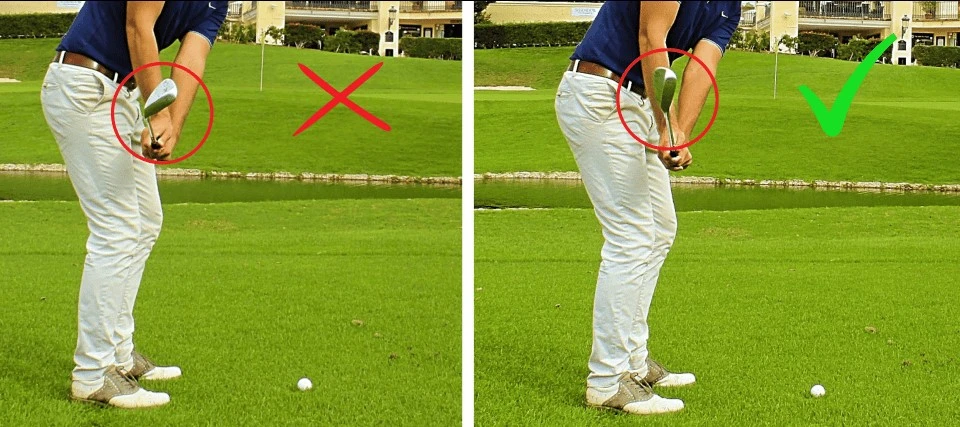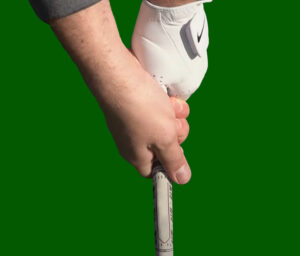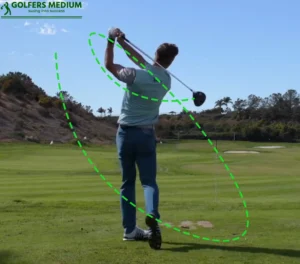Chipping the golf ball is a crucial part of the game that can make the difference between a good round and a great one. But, how do you chip the ball effectively? The answer lies in the combination of technique, strategy, and practice.
Have you ever wondered how pro golfers can effortlessly chip the ball over hazards and onto the green with precision? Or, how can they create backspin to control the ball’s roll after it lands? It’s all about understanding the various chipping techniques and practicing them to perfection.
Imagine standing just off the green, staring at a tricky chip shot, and having the confidence to hit the ball with precision and control. That’s what mastering the art of chipping can do for your game.
By using a variety of chipping techniques, like the hinge and hold, bump and run, pitch shot, or hybrid chip, you can develop a repertoire of shots to suit any situation on the course. With the right technique and strategy, you’ll be able to get the ball up and down from just about anywhere and make those important pars and birdies.
So, are you ready to take your chipping game to the next level? Then without further ado let’s get started!

- Choose the right club: Generally, golfers use a wedge to chip the ball. However, the type of wedge can vary based on the distance to the hole and the lie of the ball.

- Set up your stance: Stand with your feet close together and slightly open to the target line. Position the ball in the center of your stance, and keep your weight on your front foot.

- Align your clubface: The clubface should be open, meaning it should be angled away from your body. This helps create loft and backspin on the ball.

- Keep your wrists firm: When you swing, you want to avoid excessive wrist movement. This helps ensure that the clubface stays square to the ball.

- Make a smooth swing: The key to a good chip shot is to make a smooth, controlled swing. Keep your arms and body in sync, and focus on hitting down on the ball to create backspin.
- Follow through: After making contact with the ball, continue your swing in the direction of your target. This will help control the trajectory of the shot and give you a better chance of landing the ball close to the hole.
- Practice: As with any golf skill, practice is essential to improve your chipping. Find a practice green or set up a chipping net in your backyard, and work on your technique regularly.
Practical Tips
- Keep your hands ahead of the ball at impact: This will help ensure that the ball gets up in the air quickly and creates a soft landing.
- Use your body to control the shot: While your hands and arms are important in chipping, it’s also crucial to use your body to control the shot. Turn your torso and hips to create power and control the direction of the ball.
- Practice with different clubs: Try practicing your chipping with a variety of clubs, including your sand wedge, pitching wedge, and 9-iron. This will help you get a feel for each club and understand how they react to different types of shots.
- Pay attention to the lie of the ball: The lie of the ball will affect how it comes off the clubface. For example, if the ball is sitting up in the rough, you’ll need to hit down on it more to avoid skimming it across the green.
- Develop a consistent routine: Chipping can be a nerve-wracking part of the game, so it’s important to develop a consistent routine that you can rely on. This will help you feel more confident and prepared when you step up to the ball.
- Experiment with different shot types: There are a variety of chipping techniques you can use, including the bump-and-run, flop shot, and pitch shot. Experiment with different shots to see what works best for you in different situations.
- Visualize the shot: Before you hit the ball, take a moment to visualize the shot in your mind. Imagine the ball landing softly on the green and rolling towards the hole. This can help you feel more confident and focused when you take your swing.
8 Methods that work
These are some methods that you can follow to chip your golf ball better.
The hinge and hold method
Take your normal chipping setup with your feet close together and the ball in the center of your stance.
Instead of opening the clubface, keep it square to the target and grip the club with your hands slightly ahead of the ball.
On the backswing, hinge your wrists upwards, so the clubhead is pointing towards the sky. This creates a lot of loft on the clubface.
On the downswing, hold the wrist hinge as long as possible. This will help create a crisp contact with the ball and a lot of backspin.
Follow through with your swing, keeping your weight on your front foot and pointing the clubface towards the target.
Bump and run
The bump and run is a low, rolling shot that is useful when there is a lot of green to work with between the ball and the hole. To execute a bump and run, use a low-lofted club, like a 7-iron or 8-iron, and take a putting stance. Make a smooth, controlled stroke and let the ball roll towards the hole.
Pitch shot
A pitch shot is a high, arcing shot that is useful when you need to get the ball up and over an obstacle, like a bunker or a hill. To execute a pitch shot, open the clubface and use a higher-lofted club, like a sand wedge or lob wedge. Take a full swing and follow through with your arms and body.
Flop shot
The flop shot is a high, soft shot that is useful when you need to get the ball up and over a high obstacle, like a bunker or a tree. To execute a flop shot, use a high-lofted club, like a lob wedge, and open the clubface. Take a full swing and follow through with your arms and body, allowing the ball to land softly on the green.
Hybrid chip
The hybrid chip is a useful technique when you need to hit a longer chip shot with some roll. To execute a hybrid chip, use a hybrid club instead of a traditional wedge. Take a putting stance and make a smooth, controlled stroke, letting the ball roll towards the hole.
Putting stroke
If you’re close to the green and have a lot of green to work with, you can use a putting stroke to chip the ball. Take a putting stance and use a putter or a higher-lofted iron, like a 9-iron. Make a smooth, controlled stroke and let the ball roll towards the hole.
One-hand chip
The one-hand chip is a useful technique when you need to get the ball up quickly but don’t have a lot of green to work with. Use a high-lofted club, like a sand wedge or lob wedge, and take a one-handed grip near the top of the handle. Use a full swing and follow through with your one hand to pop the ball up and over the obstacle.
Hinge and Pop
The Hinge and Pop method is similar to the Hinge and Hold method, but instead of holding the wrist hinge through impact, you release it to create a higher, softer shot. Hinge your wrists on the backswing and then release them on the downswing, popping the ball up into the air.
Final thoughts on chipping the golf ball
Chipping the golf ball may seem like rocket science at first, but with the right mindset and a bit of experimentation, you’ll be chipping like a pro in no time. Just remember, it’s all about finesse, precision, and a dash of creativity. So, go ahead and channel your inner Picasso on the course – paint those chip shots with flair and watch your scores drop like a work of art!
Hi! I am Hannah, a golf enthusiast, have been perfecting my swing for over a decade, making long putts a breeze. Aside from playing, I am a professional golf writer, I try capture the nuances of the game and inspire others to embrace their love for golf. Follow me on Twitter.

